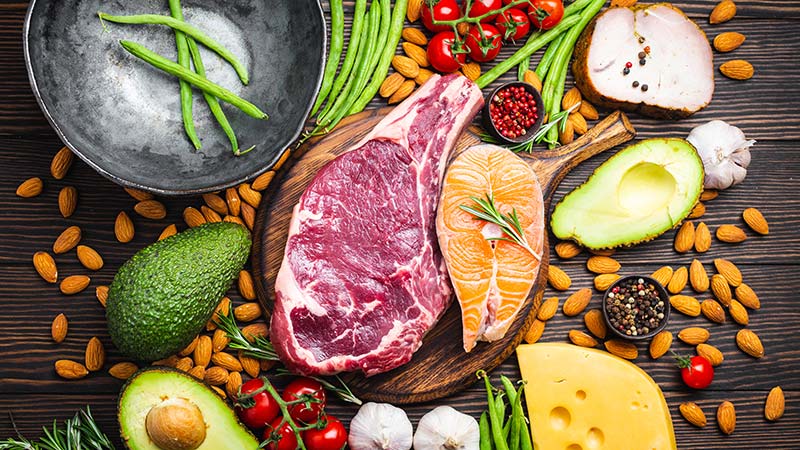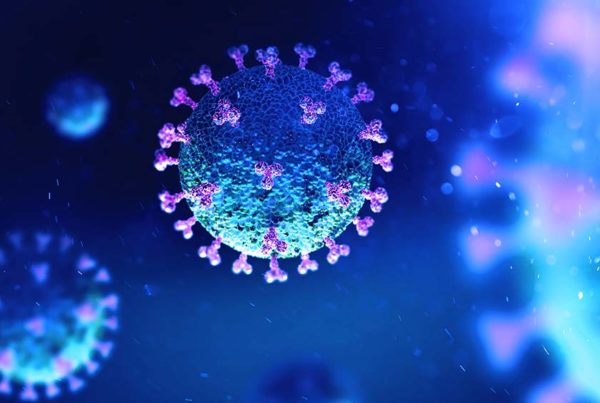
Myths and miracles of the ketogenic condition.
My first ketogenic experience was in the early 1970s. Fasting (water only) for about 10 days got me there three days in. It may have been the best physical and mental feeling I ever had up to that point in my life. No surprise since I grew up on sugar and other junk food as staples.
Later in my practice I commonly used low- and very-low carbohydrate recommendations with patients. This was considered heresy, even quackery, in the high-carb days of the late 1970s through the 90s. The unscientific myths of low-carb were perpetuated by the media and governmental recommendations, both of which were, and still are, highly influenced by Big Sugar.
But the results were miraculous to many who experienced the untold physical, biochemical and mental-emotional benefits.
Today, while the many myths linger on, more of the miracles are finally becoming well-known. And you don’t even need to fast or go hungry to attain these benefits.
I don’t like talking keto trash, especially the word diet or other trendy slang of the day. Sometimes I’m asked if I’m keto — and my response is often, “what’s that?” Instead, I discuss, write about and live real food, and most commonly recommend finding the balance of natural foods that make a person feel and perform best. If that’s very-low carbohydrate, high-fat — creating the ketogenic condition — that’s cool, because it can increase all aspects of an individual’s health and fitness.
Here are some thoughts on the many myths and miracles of keto that are still bantered about.
Myth: Ketosis is a diet.
Keto, ketogenic, and ketosis are some of the terms used to refer to the higher production of ketone bodies. This is associated with increased fat-burning and reductions in the reliance of glucose (sugar), and glycogen (stored sugar) for energy — all normal and healthy conditions. None of these terms are about being on a diet, although all the hype makes it seem that way. Of course, diets are unhealthy.
Unfortunately, diet hype remains a big attraction. That’s because diet books, online blogs, keto junk-food products, and more have exploded onto the keto scene.
(There are certainly times when a patient requires careful monitoring to ensure remaining in a ketogenic state. This is referred to as a ketogenic diet, one prescribed in medicine for more than a century. Seizure disorders, cancer, Type 1 and 2 diabetes, cardiovascular disease, and others can respond extremely well to keeping carbohydrate intake below 50 grams per day to ensure high levels of ketone bodies.)
Miracle: Ketosis is king and queen of weight loss.
It’s simple. Reducing junk food, especially sugar, and many unnecessary natural carbohydrates, while increasing healthy fats and consuming adequate proteins, typically results in healthy, sustained weight loss. But the goal is not losing weight — more a measure of water. The focus should be on reducing excess body fat. This is a powerful way to improve all other aspects of health and fitness. Monitor your progress with weekly waist-to-height ratio measures to make sure, and you’ll see what I mean by miracle. But don’t call it a diet.
Myth: Ketosis is dangerous.
It’s amazing that this idea still lingers on. Ketoacidosis is a dangerous complication in Type 1 diabetics due to the lack of insulin (with extremely high blood ketones). This has nothing to do with nutritional ketosis, which is a healthy metabolic state that we’re discussing in this article.
Miracle: Ketosis can do wonders for our health.
No doubt about it, increasing ketone bodies in the bloodstream, which corresponds to increased fat-burning and reduced reliance on sugar, has many metabolic benefits. These amazing, almost overnight responses to a ketogenic condition are sometimes described as miraculous.
The real miracle is that our natural human eating habits were ketogenic for millions of years, but only for the past few thousand have we gone astray — especially in the last 50 years, which began the process that led to 90 percent of today’s adults being overfat.
Myth: You can’t stay on keto very long.
Why not? Is this like too much of a good thing? If it’s the best way for you — your metabolism and the rest of you — to eat, continue it forever!
Miracle: The ketogenic condition can be achieved and maintained easily.
Transitioning from a modern junk-food diet to one that’s all-natural and healthy — and very low in carbohydrates — can appear challenging. But it’s clearly doable and much easier today. Once you get the concept of it — and know what junk food really is — and get used to shopping for and preparing real food, and eating out, it’s actually quite easy. Kicking sugar addiction ultimately makes going to a party, walking past a bakery, and traveling simple. You can even eat raw cacao, unsweetened, and taste its natural sweetness and think it’s too sweet. (Taste buds change significantly once you’re truly off sugar.)
Myth: The Two-Week Test is a keto diet.
While the Two-Week Test can increase fat-burning significantly, it does not necessarily reduce daily carbohydrate content to 50 grams or less leading to nutritional ketosis. In some cases, it does, and if you want to perform the Two-Week Keto Test it will. In both situations, the goal is to reduce excess insulin, and experience life without excess carbohydrates. This involves finding the level of natural carbohydrates that prevent negative signs and symptoms. More importantly, the Two-Week Test, or the Keto version, is not a diet, although many people use it as one especially for weight loss, or for recharging themselves after holidays or vacations.
Miracle: That’s what many of my patients called it.
This approach has been my go-to recommendation for more than 40 years — because the results have been called miraculous. And not just fat and weight loss, but so many conditions that create abnormal signs and symptoms (from hunger and cravings, to various diseases, from brain dysfunction to infertility). Not to mention the high number of people who are able to reduce or eliminate medications, and the reductions in disabilities.
Myth: Ketogenic diets are expensive and require a lot of special foods.
Neither is true, unless you buy into the advertising hysteria. The explosion of hyped-up expensive keto junk food — processed, packaged and so-called keto-friendly (but not necessarily healthy), includes chips, candy, sweetened bacon, bread, including the powders and other keto dietary supplements, are not only unnecessary but should be avoided on a natural eating routine. It’s also important to avoid artificial and natural sweeteners, even those that may be labeled as “keto.”
Many people actually spend less on their food bill when going keto, especially when avoiding keto junk. That’s because you’re buying real food, not packaged items that typically cost more relative to their nutrient content. And, there’s a bonus: once your metabolism stabilizes and you’re burning high amounts of body fat, your need for calories reduces — so a 20- to 30 -percent reduction of caloric intake is also quite a savings. Not to mention the health and aging benefits associated with reduced caloric intake.
Miracle: Eating real food is special
Gee, is it that simple? Yes, what a miracle! And real food is great-tasting food. You can even eat most of the things the government keeps telling people to avoid — healthy protein foods like meats, whole eggs, and cheese, and fats like cream, coconut oil and butter. Avoiding these actually increases the amount of junk food consumed, and a big reason behind the overfat pandemic. You can also take healthy, real-food dietary supplements.
Myth: Ketosis means no carbs
No-carb is the myth. There are small amounts of carbohydrates in most natural foods, so if you eat real food, you’re eating some carbohydrates. It’s not difficult to stay below 50 grams each day, and remain in a high level of ketosis. Even when consuming blueberries, cacao, nuts and seeds, and other foods with carbs. Once you learn how to stay under your limit, it’s easy. (To go no-carb you’d have to be tube fed with special medical formulas.)
Miracle: Losing sugar addiction
It’s amazing how well nutritional ketosis can curb, even cure, your cravings — actually an addiction — to sugar. In addition, it can help get rid of your sweet tooth, so you’ll taste other foods better and even enjoy desserts made to match your needs with healthy foods. Excess hunger too is usually gone within a few days if you eat properly and frequently enough (especially in the beginning, every two to four hours). In addition, of all the miraculous changes I’ve witnessed in people throughout my career, the greatest of these is getting off sugar and other junk food.
Myth: Keto is not for everyone
Keto, getting off junk food, lowering carbohydrate intake to one’s individualized level to improve health and fitness, whatever we call it, is how humans were made to eat. High-carb eating is the great experiment, a dismal failure of modern society.
Miracle: It is.
If everyone on earth was keto, we’d have world peace, few unhealthy people, more fitness, trillions of extra dollars from reduced healthcare. etc. Well, OK, I’m just overly excited by the idea that natural living can save the planet.








